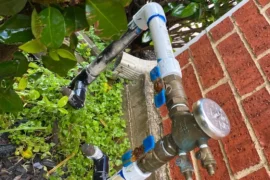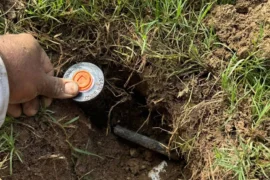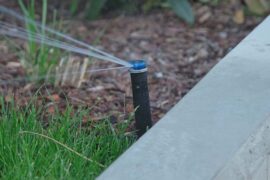Maintaining a lush, vibrant lawn is a source of pride for many homeowners, and a properly functioning sprinkler system is at the heart of this achievement. However, sprinkler systems are complex, and when issues arise, it can be challenging to diagnose the problem. One critical component that often fails and leads to problems is the sprinkler solenoid. Understanding how to identify a faulty solenoid can save you time, money, and ensure your lawn remains in top condition.
The Crucial Role of a Sprinkler Solenoid
At the core of your sprinkler system is the solenoid, a device responsible for controlling water flow. When functioning correctly, it receives electrical signals from the irrigation controller, adjusting the valve accordingly to start or stop water flow. This delicate balance ensures your lawn receives the right amount of water at the right times.
Indicators of a Faulty Solenoid
Spotting a bad solenoid early can prevent further damage to your sprinkler system and landscape. Here are three primary signs that suggest your solenoid may be failing:
01. Persistent Water Flow
Continuous water flow, where the sprinkler system fails to shut off, is a telltale sign of a solenoid issue. This condition occurs when the valve solenoid remains stuck in the open position, allowing water to flow unchecked. This scenario not only leads to excessive water usage but can also cause significant overwatering, potentially damaging your lawn. Regular inspection for stuck valves and immediate intervention is recommended to prevent water wastage and landscape damage.
02. Low or Uneven Water Pressure
Solenoids play a crucial role in regulating water pressure within the irrigation system. A malfunctioning solenoid can lead to inadequate water pressure, resulting in uneven lawn irrigation. Areas of your lawn may exhibit brown spots due to insufficient watering, while others may receive too much water, leading to pooling and potentially fostering disease. Monitoring for signs of uneven water distribution and investigating solenoid function when irregularities are observed is crucial for maintaining lawn health.
03. Water Leaks
Leaks within a sprinkler system can sometimes be attributed to a faulty solenoid. When a solenoid fails to properly open or close a valve, it can result in leaks. These leaks may manifest as unexpected water puddles around the sprinkler heads or along the piping. Persistent leaks not only contribute to water loss but can also lead to increased utility bills and potential damage to your property’s foundation or landscaping. Identifying and addressing leaks promptly can prevent these consequences.
04. Understanding Solenoid Functionality and Failure
Solenoid valves are integral to the operation of sprinkler systems, directing the flow of water through the system’s valves. These valves can be normally closed (NC), normally open (NO), or bi-stable, each type serving different operational needs based on the system’s design. Failures can occur due to various factors such as incorrect voltage, liquid contact, sediment damage, excess water pressure, or temperature changes. Each of these issues can compromise the solenoid’s functionality, leading to the problems outlined above.
Diagnosing and Testing a Faulty Solenoid
To confirm whether the solenoid is the culprit, several tests can be conducted:
Visual Inspection
A thorough visual inspection is your first step. Check for visible signs of damage like cracks, burns, or any form of physical deterioration on the solenoid. Loose connections or corroded terminals can also be a telltale sign of potential failure.
Electrical Testing
Electrical testing involves several steps aimed at diagnosing electrical problems with the solenoid:
- Resistance Check: Use a multimeter set to the ohms setting to check the solenoid’s resistance. Proper functionality is indicated by continuity (a low resistance value) when you touch the multimeter probes to the solenoid’s terminals.
- Voltage Test: Confirm the solenoid is receiving the correct voltage by using a multimeter to test the voltage across its terminals. This step is crucial for ensuring that electrical signals from the irrigation controller are adequately reaching the solenoid.
- Continuity Testing: For a deeper dive into electrical diagnostics, use a multimeter set to continuity mode. This test checks if the solenoid’s coil is intact. No continuity suggests a need for solenoid replacement.
Manual Operation Test
Attempting to manually activate the solenoid can help determine its mechanical functionality. Using a small wire or paperclip to briefly connect the solenoid to a power source (like a battery) can reveal if the solenoid clicks, suggesting it is mechanically functional. The absence of a click may indicate a mechanical failure.
Additional Troubleshooting Steps
Further testing can include:
- Swapping Solenoids: If you suspect a solenoid is faulty, swapping it with a known working solenoid from another zone can confirm the issue. If the problem follows the solenoid, it confirms the solenoid is defective and needs replacement.
- Checking for Water Flow and Leakage Issues: Water leaks or inadequate water flow can also hint at a solenoid problem. These issues might manifest as constant water flow, indicating a solenoid stuck in the open position, or as reduced water pressure affecting lawn coverage.
Conclusion
A faulty solenoid can disrupt your sprinkler system’s efficiency, leading to overwatered or underwatered areas and increased water bills. By understanding the signs of a bad solenoid and knowing how to test for one, you can ensure your sprinkler system continues to operate smoothly, keeping your lawn lush and healthy. Whether you choose to tackle the issue yourself or call in a professional, early diagnosis and action are key to preventing larger problems down the line.





